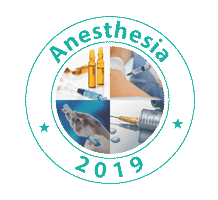Nikola Bradic
Cardiovascular Anesthesiology and Cardiac Intensive Medicine University Hospital Dubrava, Croatia University North, Department of Biomedical Sciences, Croatia
Title: Right heart dysfunction in cardiac surgery - prevention and management
Biography
Biography: Nikola Bradic
Abstract
Background: Left ventricular failure (LVF) has been established as the cause for circulatory shock for the long period of time. On the other side, the role of right ventricular failure (RVF) as the cause of circulatory shock is still insufficiently recognized in perioperative settings. Most of cases were investigated in cardiac surgery, but in non-cardiac surgery, this entity type is neglected, although, the reasons for RVF could be result from the same pathophysiology reasons. According to the newest investigations and Evaluation and Management of Right-Sided Heart Failure published in last Scientific Statement from the American Heart Association (1), this review would like to show potential causes, diagnoses and treatment for RVF.
Pathophysiology: Incidence of RVF appears in very high percentage of patients, depending of the cause. During cardiothoracic surgeries, RVF approximately in 1% after cardiotomy, 5-12% in patients undergoing heart transplantation (because of pulmonary hypertension or primary graft failure) and over the 30% in patients who need LV assist devices implantation. Further, RVF can be consequence of acute or chronic increases in pulmonary pressures, acute ischemia during surgery, disruption of left and right ventricular interdependence and cardiomyopathies as the consequence of myocarditis. In the postoperative period, acute RVF occurred in almost half of the patients, which are hemodynamically unstable. This is the result of myocardial depression after extracorporeal circulation (ECC), which is usually mild, but can exacerbate in vulnerable patients.
Clinical presentation and diagnose: Clinical presentation of acute RVF mainly varies depending on the primary cause, the occurrence of other diseases, and depends about reserve of the right heart. Right heart failure may occur suddenly during or immediately after surgery in, previously, unrecognized but compensated RHF. Diagnose is typically relies on echocardiography (transesophageal and/or transthoracic), and it is recommended to use both techniques and different views to estimate right ventricular structures and function. Pulmonary artery catheter (PAC) can give valuable information about functional status of both ventricles, pulmonary resistance, changing in trends of measured values. Usage of PAC in today practice should be reserved for the patients with previously known RVF but in combination with echocardiography is extremely useful for patients in postoperative period. Changes in electrocardiogram (ECG) in acute RVF are limited with very low sensitivity and specificity.
Treatment of RVF: The treatment of RVF can be directed on several ways. First, it is necessary to decrease RV afterload and optimization of preload. This can be accomplished with ventilation strategies, preventing of rhythm disturbances and keeping of atrioventricular synchronicity. If this measures stay without results, pharmacological treatment must be established. Inotropic support with phosphodiesterase III inhibitors and levosimendan are recommended due to their inotropic and vasodilatative (especially on pulmonary circulation), while beta agonists are recommended as the second line of inotropic support, due to their negative effects (increasing oxygen consumption and arrhythmogenic effect). If patients need support with vasoconstrictors (due to hypotension), vasopresin is recommended over norepinephrine because of its lesser vasoconstrictive on pulmonary circulation. Specific pulmonary vasodilators may be also useful to reduce RV afterload in acute RVF settings. Finally, in very difficult patients, it is recommended use of mechanical support. Extracorporeal membrane oxygenation (ECMO), both veno-venous and/or veno-arterial is recommended as the first type of mechanical support. In case of improvement lacking, long-term mechanical support with right ventricular assist device (RVAD) can be established as the temporary support, or as the bridging to transplantation.
Conclusion: Despite of much knowledge's about RVF, this complication still remains a huge problem in perioperative period in cardiac surgery patients. Recognition and treatment must be appropriate and as quick as possible, because prolonged RVF can be deleterious and increase mortality in these patients.

